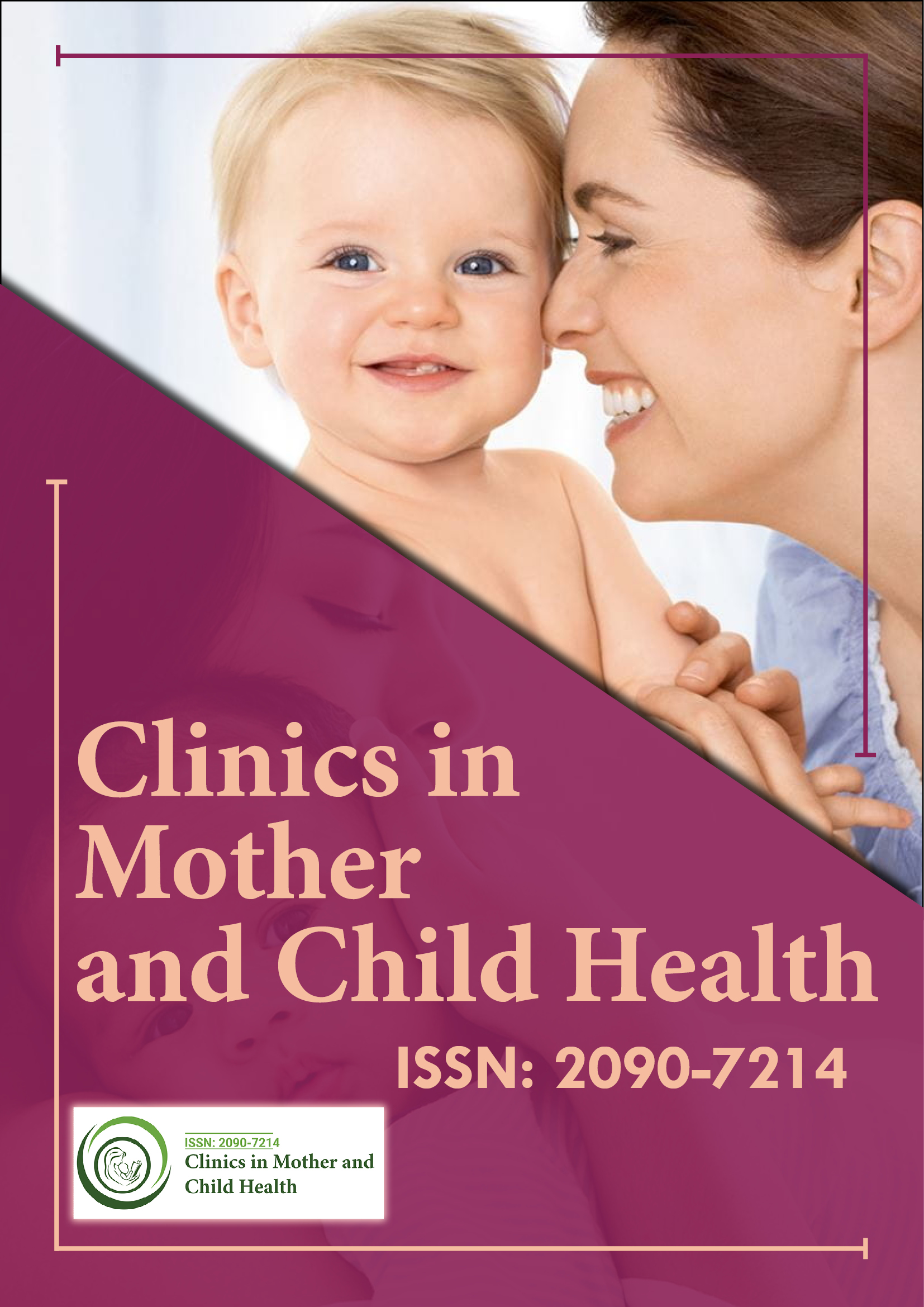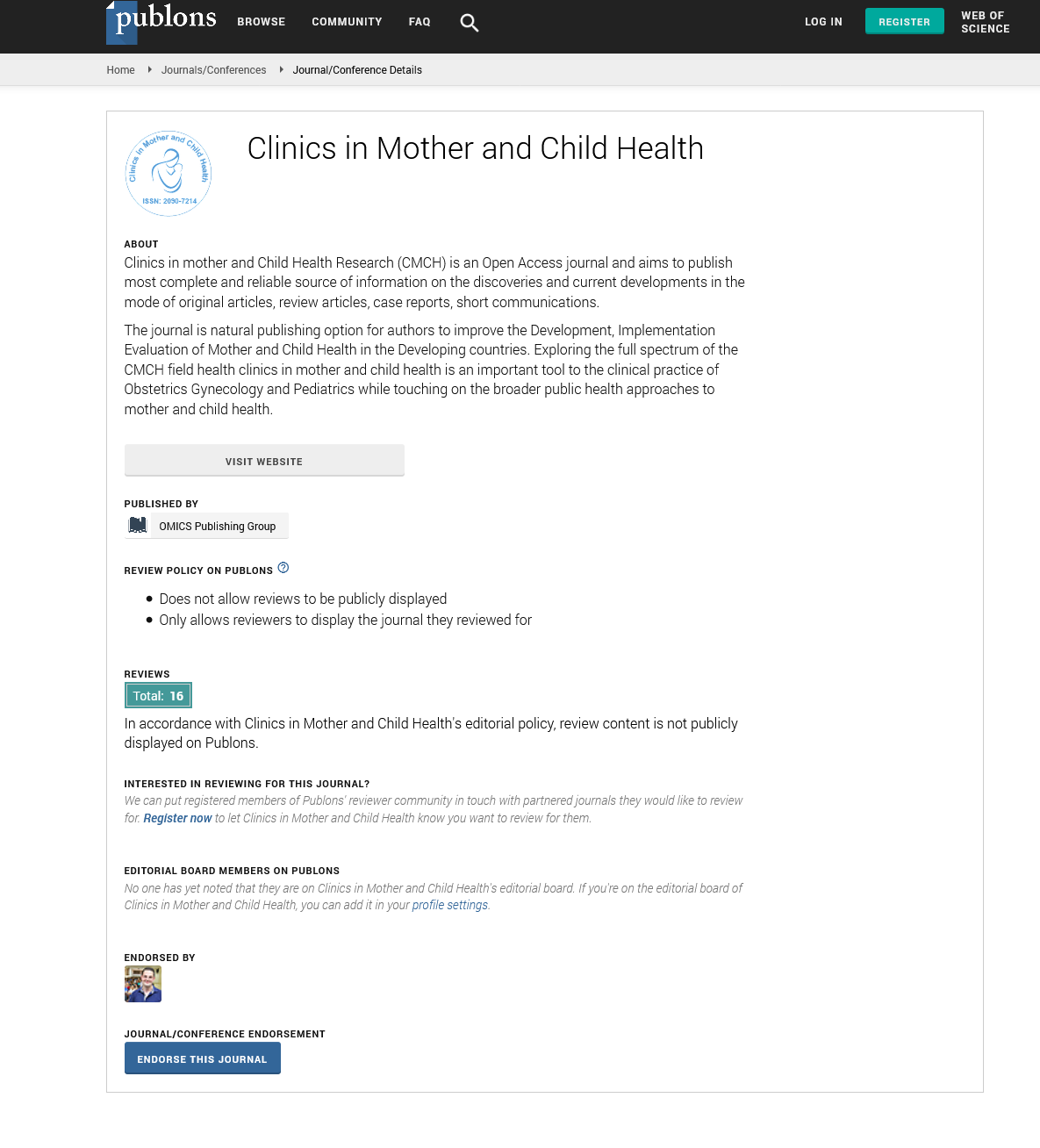Indexed In
- Genamics JournalSeek
- RefSeek
- Hamdard University
- EBSCO A-Z
- Publons
- Geneva Foundation for Medical Education and Research
- Euro Pub
- Google Scholar
Useful Links
Share This Page
Journal Flyer

Open Access Journals
- Agri and Aquaculture
- Biochemistry
- Bioinformatics & Systems Biology
- Business & Management
- Chemistry
- Clinical Sciences
- Engineering
- Food & Nutrition
- General Science
- Genetics & Molecular Biology
- Immunology & Microbiology
- Medical Sciences
- Neuroscience & Psychology
- Nursing & Health Care
- Pharmaceutical Sciences
Perspective Article - (2024) Volume 0, Issue 0
Predicting Future Cardiovascular Risk in Women with Prior Preeclampsia
Jonathan Caturegli*Received: 20-Nov-2024, Manuscript No. CMCH-24-28152; Editor assigned: 22-Nov-2024, Pre QC No. CMCH-24-28152(PQ); Reviewed: 10-Dec-2024, QC No. CMCH-24-28152; Revised: 17-Dec-2024, Manuscript No. CMCH-24-28152(R); Published: 24-Dec-2024, DOI: 10.35248/2090-7214.21.S27.004
Description
Preeclampsia is recognized as a significant risk factor for the development of cardiovascular diseases later in life. Women with a history of preeclampsia are at a higher risk of chronic hypertension, ischemic heart disease, stroke and heart failure. The pathophysiological changes during preeclampsia, including endothelial dysfunction, inflammation and metabolic disturbances, can persist postpartum, contributing to long-term cardiovascular risk. Understanding the predictors and developing effective screening strategies are essential for improving cardiovascular outcomes in this population. Preeclampsia is associated with endothelial dysfunction, characterized by impaired vasodilation, increased vascular permeability and a pro-inflammatory state. These endothelial changes can persist postpartum, predisposing women to atherosclerosis and other cardiovascular conditions. Chronic inflammation and an altered immune response during preeclampsia can lead to long-term vascular damage. Elevated levels of inflammatory markers, such as C-Reactive Protein (CRP) and cytokines, are common in women with a history of preeclampsia, indicating a sustained inflammatory state. Preeclampsia is often accompanied by metabolic disturbances, including insulin resistance and dyslipidemia. These metabolic changes can increase the risk of developing cardiovascular diseases by promoting the formation of plaques in the arteries and impairing vascular function. Genetic predispositions and epigenetic modifications can influence the susceptibility to both preeclampsia and future cardiovascular diseases. Identifying genetic markers and understanding epigenetic changes can help predict cardiovascular risk and guide personalized interventions. Several risk assessment tools, such as the Framingham Risk Score and the American College of Cardiology/American Heart Association (ACC/AHA) Cardiovascular Risk Calculator, can be used to estimate the 10-year cardiovascular risk in women with a history of preeclampsia. These tools incorporate factors such as age, blood pressure, cholesterol levels and smoking status to calculate the risk. Measuring biomarkers associated with endothelial dysfunction, inflammation and metabolic disturbances can provide valuable insights into cardiovascular risk. Biomarkers such as CRP, Interleukin-6 (IL-6) and highsensitivity troponin can help identify women at higher risk and guide preventive strategies. Advanced imaging techniques, such as Carotid Intima-Media Thickness (CIMT) measurement and Coronary Artery Calcium (CAC) scoring, can detect early signs of atherosclerosis and vascular changes. These non-invasive imaging methods can help predict cardiovascular risk and monitor disease progression. Genetic testing can identify specific genetic variations associated with an increased risk of preeclampsia and cardiovascular diseases. Understanding genetic predispositions can help tailor preventive measures and early interventions for at-risk women. Adopting a heart-healthy lifestyle is essential for reducing cardiovascular risk. Women with a history of preeclampsia should be encouraged to maintain a balanced diet, engage in regular physical activity, avoid smoking and manage stress. These lifestyle changes can significantly reduce the risk of developing cardiovascular diseases. Regular cardiovascular monitoring and follow-up are essential for early detection and management of risk factors. Blood pressure, cholesterol levels and blood glucose should be monitored periodically to identify any abnormalities and intervene promptly. In some cases, pharmacological interventions may be necessary to manage cardiovascular risk factors. Antihypertensive medications, statins and antiplatelet agents can be prescribed to control blood pressure, lipid levels and prevent thrombotic events. The choice of medication should be individualized based on the patient's risk profile and health status. Educating women about the long-term cardiovascular risks associated with preeclampsia and the importance of preventive measures is vital. Healthcare providers should provide comprehensive counseling and support to empower women to take an active role in managing their cardiovascular health. Socioeconomic and environmental factors play a significant role in modulating cardiovascular risk in women with a history of preeclampsia. Access to healthcare, education and socioeconomic status can influence health outcomes. Women from lower socioeconomic backgrounds may face barriers to accessing timely and adequate healthcare, leading to poorer cardiovascular outcomes.
Conclusion
Additionally, environmental factors such as exposure to air pollution and availability of nutritious food can impact cardiovascular health. Addressing these disparities through public health initiatives and policy changes is essential for reducing the overall cardiovascular risk in this population. Preconception care involves assessing and optimizing a woman's health before pregnancy, while interconception care focuses on the period between pregnancies. These care strategies aim to identify and manage risk factors, such as hypertension and metabolic disorders, to improve maternal and fetal outcomes in subsequent pregnancies. Healthcare providers should emphasize the importance of preconception and interconception care and integrate them into routine healthcare services.
Citation: Caturegli J (2024). Predicting Future Cardiovascular Risk in Women with Prior Preeclampsia. Clinics Mother Child Health. S27:004.
Copyright: © 2024 Caturegli J. This is an open-access article distributed under the terms of the Creative Commons Attribution License, which permits unrestricted use, distribution, and reproduction in any medium, provided the original author and source are credited.

